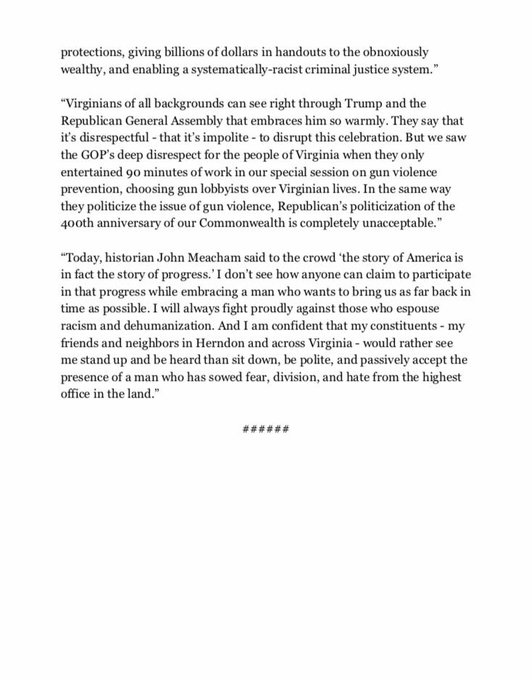The FBI for the first time has identified fringe conspiracy theories as a domestic terrorist threat, according to a previously unpublicized document obtained by Yahoo News. (Read the document below.)
The FBI intelligence bulletin from the bureau’s Phoenix field office, dated May 30, 2019, describes “conspiracy theory-driven domestic extremists,” as a growing threat, and notes that it is the first such report to do so. It lists a number of arrests, including some that haven’t been publicized, related to violent incidents motivated by fringe beliefs.
The document specifically mentions QAnon, a shadowy network that believes in a deep state conspiracy against President Trump, and Pizzagate, the theory that a pedophile ring including Clinton associates was being run out of the basement of a Washington, D.C., pizza restaurant (which didn’t actually have a basement).
“The FBI assesses these conspiracy theories very likely will emerge, spread, and evolve in the modern information marketplace, occasionally driving both groups and individual extremists to carry out criminal or violent acts,” the document states. It also goes on to say the FBI believes conspiracy theory-driven extremists are likely to increase during the 2020 presidential election cycle.
The FBI said another factor driving the intensity of this threat is “the uncovering of real conspiracies or cover-ups involving illegal, harmful, or unconstitutional activities by government officials or leading political figures.” The FBI does not specify which political leaders or which cover-ups it was referring to.
President Trump is mentioned by name briefly in the latest FBI document, which notes that the origins of QAnon is the conspiratorial belief that “Q,” allegedly a government official, “posts classified information online to reveal a covert effort, led by President Trump, to dismantle a conspiracy involving ‘deep state’ actors and global elites allegedly engaged in an international child sex trafficking ring.”
This recent intelligence bulletin comes as the FBI is facing pressure to explain who it considers an extremist, and how the government prosecutes domestic terrorists. In recent weeks the FBI director has addressed domestic terrorism multiple times but did not publicly mention this new conspiracy theorist threat.
The FBI is already under fire for its approach to domestic extremism. In a contentious hearing last week before the Senate Judiciary Committee, FBI Director Christopher Wray faced criticism from Democrats who said the bureau was not focusing enough on white supremacist violence. “The term ‘white supremacist,’ ‘white nationalist’ is not included in your statement to the committee when you talk about threats to America,” Sen. Richard Durbin, D-Ill., said. “There is a reference to racism, which I think probably was meant to include that, but nothing more specific.”
FBI Conspiracy Theory Redacted by Kelli R. Grant on Scribd
Wray told lawmakers the FBI had done away with separate categories for black identity extremists and white supremacists, and said the bureau was instead now focusing on “racially motivated” violence. But he added, “I will say that a majority of the domestic terrorism cases that we’ve investigated are motivated by some version of what you might call white supremacist violence.”
The FBI had faced mounting criticism for the term “black identity extremists,” after its use was revealed by Foreign Policy magazine in 2017. Critics pointed out that the term was an FBI invention based solely on race, since no group or even any specific individuals actually identify as black identity extremists.
In May, Michael C. McGarrity, the FBI’s assistant director of the counterterrorism division, told Congress the bureau now “classifies domestic terrorism threats into four main categories: racially motivated violent extremism, anti-government/anti-authority extremism, animal rights/environmental extremism, and abortion extremism,” a term the bureau uses to classify both pro-choice and anti-abortion extremists.
The new focus on conspiracy theorists appears to fall under the broader category of anti-government extremism. “This is the first FBI product examining the threat from conspiracy theory-driven domestic extremists and provides a baseline for future intelligence products,” the document states.
The new category is different in that it focuses not on racial motivations, but on violence based specifically on beliefs that, in the words of the FBI document, “attempt to explain events or circumstances as the result of a group of actors working in secret to benefit themselves at the expense of others” and are “usually at odds with official or prevailing explanations of events.”
The FBI acknowledges conspiracy theory-driven violence is not new, but says it’s gotten worse with advances in technology combined with an increasingly partisan political landscape in the lead-up to the 2020 presidential election. “The advent of the Internet and social media has enabled promoters of conspiracy theories to produce and share greater volumes of material via online platforms that larger audiences of consumers can quickly and easily access,” the document says.
The bulletin says it is intended to provide guidance and “inform discussions within law enforcement as they relate to potentially harmful conspiracy theories and domestic extremism.”
The FBI Phoenix field office referred Yahoo News to the bureau’s national press office, which provided a written statement.
“While our standard practice is to not comment on specific intelligence products, the FBI routinely shares information with our law enforcement partners in order to assist in protecting the communities they serve,” the FBI said.
In its statement, the FBI also said it can “never initiate an investigation based solely on First Amendment protected activity. As with all of our investigations, the FBI can never monitor a website or a social media platform without probable cause.”
The Department of Homeland Security, which has also been involved in monitoring domestic extremism, did not return or acknowledge emails and phone requests for comment.
While not all conspiracy theories are deadly, those identified in the FBI’s 15-page report led to either attempted or successfully carried-out violent attacks. For example, the Pizzagate conspiracy led a 28-year-old man to invade a Washington, D.C., restaurant to rescue the children he believed were being kept there, and fire an assault-style weapon inside.
The FBI document also cites an unnamed California man who was arrested on Dec. 19, 2018, after being found with what appeared to be bomb-making materials in his car. The man allegedly was planning “blow up a satanic temple monument” in the Capitol rotunda in Springfield, Ill., to “make Americans aware of Pizzagate and the New World Order, who were dismantling society,” the document says.
Historian David Garrow, the author of a Pulitzer Prize-winning biography of Martin Luther King Jr. who has worked extensively with FBI archives, raised doubts to Yahoo News about the memo. He says the FBI’s default assumption is that violence is motivated by ideological beliefs rather than mental illness. “The guy who shot up the pizza place in D.C.: Do we think of him as a right-wing activist, or insane?” Garrow asked.
Garrow was similarly critical of the FBI’s use of the term “black identity extremists” and related attempts to ascribe incidents like the 2016 shooting of six police officers in Baton Rouge, La., to black radicalism. He said the shooter, Gavin Long, had a history of mental health problems. “The bureau’s presumption — the mindset — is to see ideological motives where most of the rest of us see individual nuttiness,” he said.
Identifying conspiracy theories as a threat could be a political lightning rod, since President Trump has been accused of promulgating some of them, with his frequent references to a deep state and his praise in 2015 for Alex Jones, who runs the conspiracy site InfoWars. While the FBI intelligence bulletin does not mention Jones or InfoWars by name, it does mention some of the conspiracy theories frequently associated with the far-right radio host, in particular the concept of the New World Order.
Jones claimed the Sandy Hook Elementary School shooting, in which 26 children were killed, was a hoax, a false flag operation intended as a pretext for the government to seize or outlaw firearms. The families of a number of victims have sued Jones for defamation, saying his conspiracy-mongering contributed to death threats and online abuse they have received.
While Trump has never endorsed Sandy Hook denialism, he was almost up until the 2016 election the most high-profile promoter of the birther conspiracy that claimed former President Barack Obama was not born in the United States. He later dropped his claim, and deflected criticism by pointing the finger at Hillary Clinton. He said her campaign had given birth to the conspiracy, and Trump “finished it.”
There is no evidence that Clinton started the birther conspiracy.
Joe Uscinski, an associate professor of political science at the University of Miami, whose work on conspiracy theories is cited in the intelligence bulletin, said there’s no data suggesting conspiracy theories are any more widespread now than in the past. “There is absolutely no evidence that people are more conspiratorial now,” says Uscinski, after Yahoo News described the bulletin to him. “They may be, but there is not strong evidence showing this.”
It’s not that people are becoming more conspiratorial, says Uscinski, but conspiracies are simply getting more media attention.
“We are looking back at the past with very rosy hindsight to forget our beliefs, pre-internet, in JFK [assassination] conspiracy theories and Red scares. My gosh, we have conspiracy theories about the king [of England] written into the Declaration of Independence,” he said, referencing claims that the king was planning to establish tyranny over the American colonies.
It’s not that conspiracy theorists are growing in number, Uscinski argues, but that media coverage of those conspiracies has grown. “For most of the last 50 years, 60 to 80 percent of the country believe in some form of JFK conspiracy theory,” he said. “They’re obviously not all extremist.”
Conspiracy theories, including Russia’s role in creating and promoting them, attracted widespread attention during the 2016 presidential election when they crossed over from Internet chat groups to mainstream news coverage. Yahoo News’s “Conspiracyland” podcast recently revealed that Russia’s foreign intelligence service was the origin of a hoax report that tied the murder of Seth Rich, a Democratic National Committee staffer, to Hillary Clinton.
Washington police believe that Rich was killed in a botched robbery, and there is no proof that his murder had any political connections.
Among the violent conspiracy theories cited in the May FBI document is one involving a man who thought Transportation Security Administration agents were part of a New World Order. Another focused on the High Frequency Active Auroral Research Program (HAARP), a government-funded facility in Alaska that has been linked to everything from death beams to mind control. The two men arrested in connection with HAARP were “stockpiling weapons, ammunition and other tactical gear in preparation to attack” the facility, believing it was being used “to control the weather and prevent humans from talking to God.”
Nate Snyder, who served as a Department of Homeland Security counterterrorism official during the Obama administration, said that the FBI appears to be applying the same radicalization analysis it employs against foreign terrorism, like the Islamic State group, which has recruited followers in the United States.
“The domestic violent extremists cited in the bulletin are using the same playbook that groups like ISIS and al-Qaida have used to inspire, recruit and carry out attacks,” said Snyder, after reviewing a copy of the bulletin provided by Yahoo News. “You put out a bulletin and say this is the content they’re looking at — and it’s some guy saying he’s a religious cleric or philosopher — and then you look at the content, videos on YouTube, etc., that they are pushing and show how people in the U.S. might be radicalized by that content.”
Though the FBI document focuses on ideological motivations, FBI Director Wray, in his testimony last week, asserted that the FBI is concerned only with violence, not people’s beliefs. The FBI doesn’t “investigate ideology, no matter how repugnant,” he told lawmakers. “We investigate violence. And any extremist ideology, when it turns to violence, we are all over it. … In the first three quarters of this year, we’ve had more domestic terrorism arrests than the prior year, and it’s about the same number of arrests as we have on the international terrorism side.”
Yet the proliferation of the extremist categories concerns Michael German, a former FBI agent and now a fellow with the Brennan Center for Justice’s Liberty & National Security program. “It’s part of the radicalization theory the FBI has promoted despite empirical studies that show it’s bogus,” he said.
German says this new category is a continuing part of FBI overreach. “They like the radicalization theory because it justifies mass surveillance,” he said. “If we know everyone who will do harm is coming from this particular community, mass surveillance is important. We keep broadening the number of communities we include in extremist categories.”
For Garrow, the historian, the FBI’s expansive definition has its roots in bureau paranoia that dates back decades. “I think it’s their starting point,” he said. “This goes all the way back to the Hoover era without question. They see ideology as a central motivating factor in human life, and they don’t see mental health issues as a major factor.”
Yet trying to label a specific belief system as prone to violence is problematic, he said.
“I don’t think most of us would do a good job in predicting what sort of wacky information could lead someone to violence, or not lead anyone to violence,” Garrow said. “Pizzagate would be a great example of that.”








